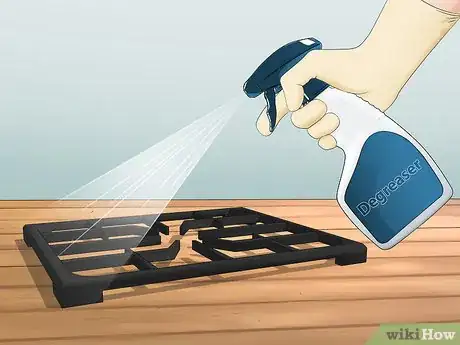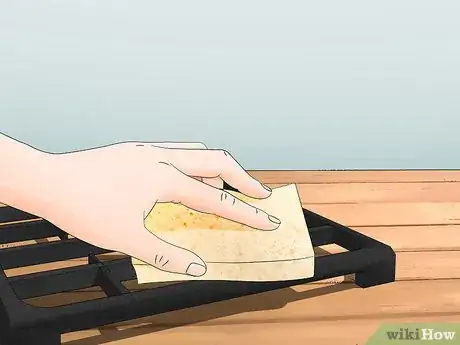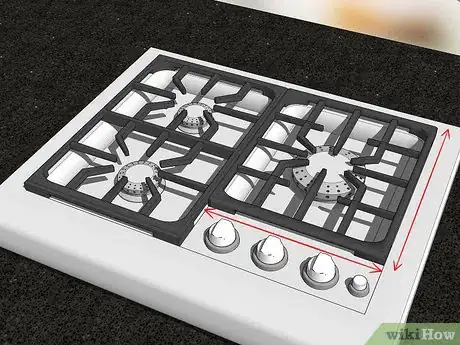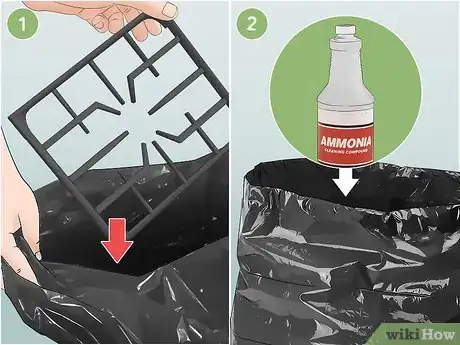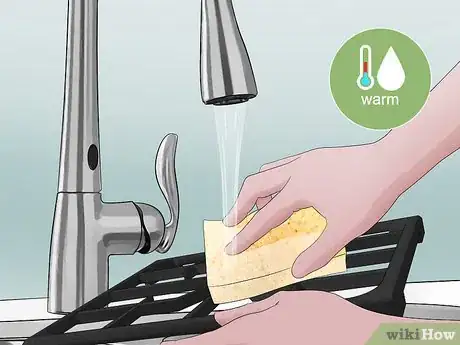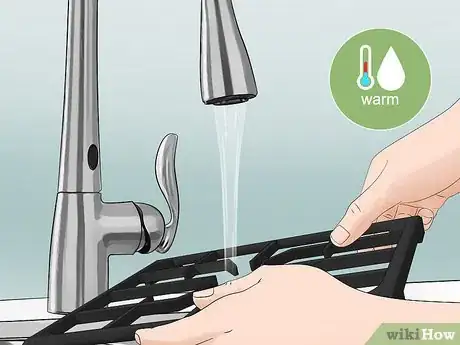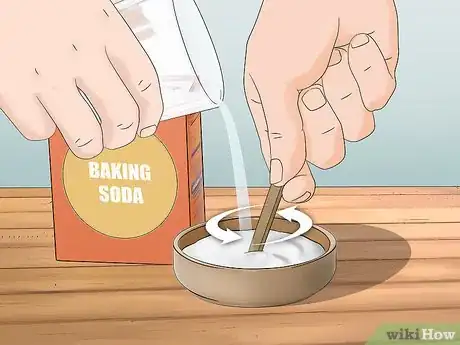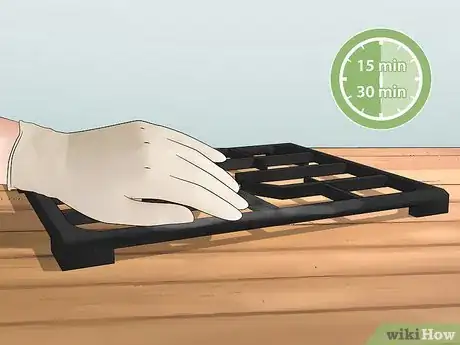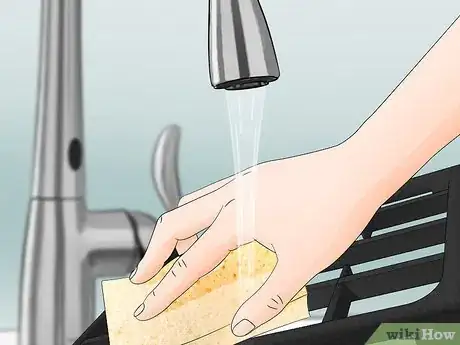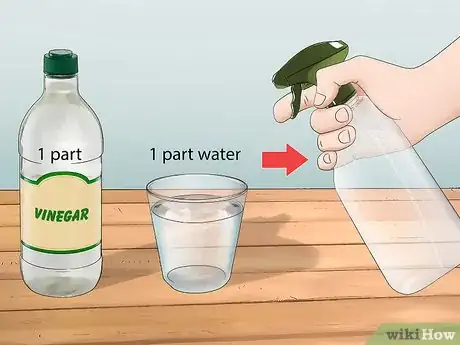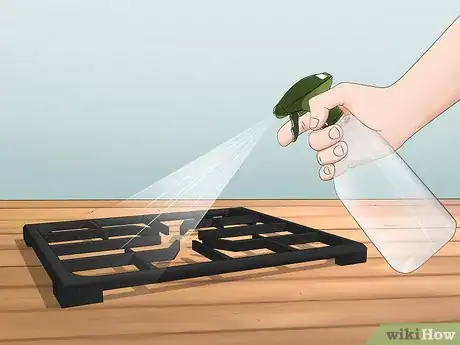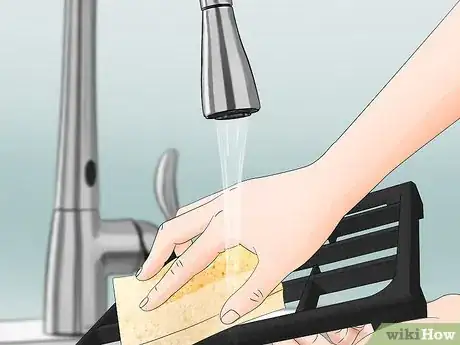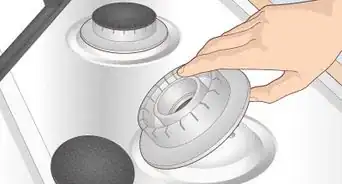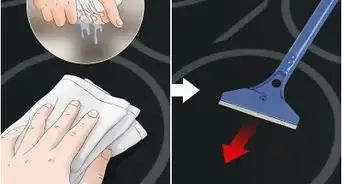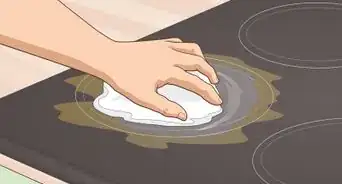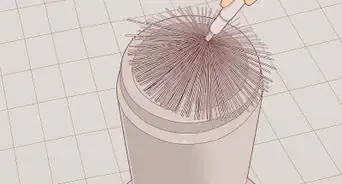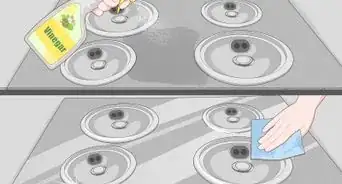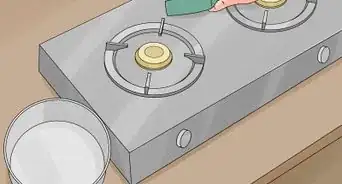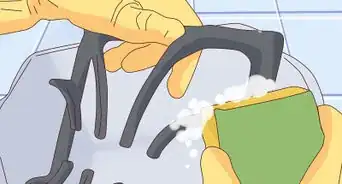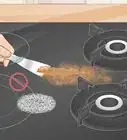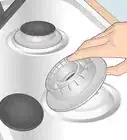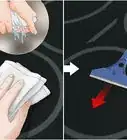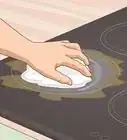This article was co-authored by Chris Willatt. Chris Willatt is the owner and founder of Alpine Maids, a cleaning agency in Denver, Colorado started in 2015. Alpine Maids has received Angie's List Super Service Award for three years in a row since 2016 and has been awarded Colorado's "Top Rated Local House Cleaning" Award in 2018.
There are 11 references cited in this article, which can be found at the bottom of the page.
This article has been viewed 158,944 times.
It’s entirely possible that cleaning the grates on your stovetop isn’t a priority when it comes to cleaning your kitchen. Sooner or later, all that cooking residue, oil, and debris can result in a hefty crust, and eventually, you’ll have yourself a priority on your hands. By using one or a series of tried and true methods, you’ll find this task is significantly more manageable than it seems.
Steps
Cleaning with Degreaser
-
1Soak your grates with enough degreaser that the surface appears wet. You’ll need to use enough degreaser to ensure that the grates stay wet throughout the soaking process. That wet look lets you know that you are coating all that build-up, such that the product can seep in and go to work.[1]
-
2Provide the degreaser with plenty of time to do its job. You’ll need to let the degreaser sit for 15 to 30 minutes, depending on the level of gunk built up on the grates. As you wait, check back frequently that the grates are still wet. If they are starting to dry out, reapply more greaser, and let sit for up to the full 30 minutes. [2]Advertisement
-
3Scrub away all that excess dirt with the proper scrubbing tool. While cast iron may seem sturdy enough to scrub with steel wool, you’re going to want to use a non-abrasive sponge to clean the grates thoroughly.[3] It may require some additional elbow grease, but it won’t leave your grates with a bunch of ugly scratches. [4]
Cleaning with Ammonia Fumes
-
1Measure the size of your grates. Stovetop grates come in a variety of sizes, and you’ll need to determine what size bag is appropriate for your grates. Conversely, you may decide to clean all the grates in one bag.
- If you are cleaning the grates individually, choose several gallon size ziplock bags.
- If you intend to clean the grates all together, make sure you find a large garbage bag that is capable of being well sealed.
-
2Add the ammonia to your bag and seal it tight to keep fumes locked in. This method does not use liquid ammonia to clean the grates. Rather, the fumes from the ammonia build-up, causing the grime and grit to loosen over time. Grates may take as little as 3 hours to clean, but we recommend letting the grates sit overnight. [5]
-
3
Coating with Baking Soda
-
1Wash the grates with warm water. The initial wash will remove any surface layers that can easily be rinsed away, allowing the baking soda to work on the tougher material underneath.
-
2Make a thick paste by combining baking soda with water.[10] You can also substitute vinegar for the water for a deeper cleaning agent. The goal is to make a paste thick enough to coat and adhere to the grates.
-
3Coat all grates with the paste and let stand for an hour. This caustic mixture will erode any excess build-up as it sets in. You’ll see what you’ve seen at every grade-school science fair; the bubbly baking soda goes to work on any acidic counterparts.[11]
-
4
Spraying with a Vinegar Solution
-
1Create a solution of equal parts water and vinegar. Pour the solution into a spray bottle for easy application.
- The acid in the vinegar will help break up the residue on the grates. Using this solution is a much more natural way to clean if you feel like forgoing the degreaser or ammonia methods.
- This cleaning method works best for maintenance and getting rid of light grease stains. [14]
-
2Coat the grates and let stand for at least 15 minutes. As you are using a more natural clean agent, significant soak time is recommended to penetrate the layers of grease.
-
3Scrub the grates with a sponge and rinse them. You should find that the excess residue on the grates comes away, albeit with a little extra scrubbing. If you find that your grates still have some residue on the surfaces, you can repeat this process as needed. [15]
- You can use a toothbrush to scrub away any hard to reach nooks and crevices.
Community Q&A
Did you know you can get answers researched by wikiHow Staff?
Unlock staff-researched answers by supporting wikiHow
-
QuestionHow do you make cast iron grates look new?
 wikiHow Staff EditorThis answer was written by one of our trained team of researchers who validated it for accuracy and comprehensiveness.
wikiHow Staff EditorThis answer was written by one of our trained team of researchers who validated it for accuracy and comprehensiveness.
Staff Answer wikiHow Staff EditorStaff Answer
wikiHow Staff EditorStaff Answer -
QuestionCan you use Easy Off on cast iron grates?
 wikiHow Staff EditorThis answer was written by one of our trained team of researchers who validated it for accuracy and comprehensiveness.
wikiHow Staff EditorThis answer was written by one of our trained team of researchers who validated it for accuracy and comprehensiveness.
Staff Answer wikiHow Staff EditorStaff Answer
wikiHow Staff EditorStaff Answer -
QuestionHow do you clean stove grates with vinegar?
 wikiHow Staff EditorThis answer was written by one of our trained team of researchers who validated it for accuracy and comprehensiveness.
wikiHow Staff EditorThis answer was written by one of our trained team of researchers who validated it for accuracy and comprehensiveness.
Staff Answer wikiHow Staff EditorStaff Answer
wikiHow Staff EditorStaff Answer
Warnings
- Ammonia is a chemical that may irritate the nose, throat, and respiratory system upon inhalation. Make sure your area is properly ventilated. [18]⧼thumbs_response⧽
- Ensure proper safety when handling any chemical, cleaning solution, or acid by using gloves and eye protection.⧼thumbs_response⧽
References
- ↑ Chris Willatt. House Cleaning Professional. Expert Interview. 1 July 2019.
- ↑ https://cleanmyspace.com/cleaning-greasy-stovetop-grates/
- ↑ James Sears. House Cleaning Professional. Expert Interview. 28 August 2019.
- ↑ https://cleanmyspace.com/cleaning-greasy-stovetop-grates/
- ↑ https://products.geappliances.com/appliance/gea-support-search-content?contentId=17275
- ↑ https://www.practicallyfunctional.com/how-to-clean-stove-top-grates/
- ↑ https://www.tasteofhome.com/article/how-to-clean-burner-grates-on-a-gas-stove/
- ↑ James Sears. House Cleaning Professional. Expert Interview. 28 August 2019.
- ↑ https://www.practicallyfunctional.com/how-to-clean-stove-top-grates/
- ↑ James Sears. House Cleaning Professional. Expert Interview. 28 August 2019.
- ↑ Chris Willatt. House Cleaning Professional. Expert Interview. 1 July 2019.
- ↑ James Sears. House Cleaning Professional. Expert Interview. 28 August 2019.
- ↑ https://www.tasteofhome.com/article/how-to-clean-burner-grates-on-a-gas-stove/
- ↑ https://www.bhg.com.au/how-to-clean-stove-grates
- ↑ https://decenthomedecor.com/clean-stove-grates/
- ↑ https://www.americastestkitchen.com/guides/cook-it-in-cast-iron/busting-cast-iron-myths
- ↑ https://www.thekitchn.com/how-to-clean-enameled-cast-iron-stove-grates-cleaning-lessons-from-the-kitchn-205967
- ↑ https://www.health.ny.gov/environmental/emergency/chemical_terrorism/ammonia_tech.htm
